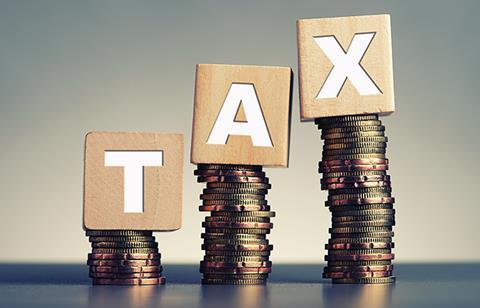
- Nearly 2,000% more than ten years ago when the allowance was introduced
HM Revenue & Customs has released new figures* showing that the tax collected from individuals breaching the Lifetime Allowance (LTA) has rocketed by £97m since it was introduced in 2006, with the latest figures showing that £102m in tax was collected from individuals exceeding the allowance during 2016/17, compared with less than £5m in 2006/7 when the LTA was introduced.
WEALTH at work, a specialist provider of financial education and guidance in the workplace supported by regulated advice for individuals, believes that individuals who breach the LTA typically fall into one of the following three categories - and by highlighting this, it can help employers and employees identify who may be at risk.
Employees who are blissfully unawareMost employees probably think that they aren’t one of the lucky ones to have a pension pot valued at the current LTA limit of £1.03 million or more - but it’s quite possible that the value of their pot is far higher than they realise and they may have already breached the allowance. This could particularly affect those who never check the value of their pension, or haven’t done so for some time. Also, many employees in defined benefit (DB) pension schemes are unaware that their pension is valued at twenty times their annual pension for LTA purposes and so an annual pension of £30,000 has a value of £600,000.
If a member of a DB pension scheme decides to transfer the arrangement into a defined contribution scheme to take advantage of the pension freedoms, the transfer values offered can be much higher than the standard method of working out the LTA value. For example, transfer values can be as high as forty times the annual pension, and so, using the above example, an annual pension of £30,000 could have a transfer value of £1.2m and therefore exceed the LTA.
Employees who think they are a long way offThis group of individuals believe that they are a long way from breaching the LTA, but in fact aren’t. This is particularly the case where employees are making healthy contributions into their scheme and perhaps receiving matching contributions. Positive pension fund growth as well as a pay rise may easily push them over the LTA before they know it.
For example**, if someone aged 45 has a pension fund of £400,000 and a salary of £50,000, saves 5% of their salary into their pension which rises by 3% p.a and receives employer contributions of 10%, rising by 3% p.a., it is possible for their pension fund to reach £1,670,000 by the time they retire at 65. By this time the LTA is expected to be valued at £1,690,000, showing they are not that far from breaching the limit.
Employees who think they are protected but aren’tEmployees who have taken protection measures and opted out of their workplace pension scheme to safeguard their savings from a LTA charge, could still be at risk of a breach. This is because of how the rules around auto-enrolment work, meaning that employees are re-enrolled every three years.
Just one month’s contributions could invalidate a previously applied for protection, without employees even realising. Responsible employers will inform employees whom they plan to re-enrol, so that they’re aware that pension contributions will be deducted from their monthly pay.
There are some steps that employees can take to either avoid or reduce the impact of the LTA:
Employees should assess their current situationIf they have already taken some pension benefits, they should start by looking at a current pension valuation and assessing how much of their LTA they have used. If employees have more than one pension, they will need to add up what they’ve accumulated across all their pensions to work out the full amount.
Employees could consider alternative savings vehiclesIndividual Savings Accounts and workplace share schemes are two tax-efficient savings vehicles for employees to consider saving in as an alternative, or supplementary to, a pension.
Employees could opt-outSome employees may choose to opt-out of their workplace pension scheme for LTA purposes - but it’s important that there is a system in place which informs employees whom are being re-enrolled before the three year period arrives. Also, employees need to understand that a decision to opt-out should not be taken lightly and that it could well be in a member’s best interests to remain active in their scheme despite a potential tax charge. If employees are considering opting-out then it’s best that regulated advice is received from a suitably qualified adviser.
Employees could take early retirementA simple way for employees to avoid exceeding the LTA, or incurring further charges, is to stop contributing into their pension and taking early retirement.
Jonathan Watts-Lay, Director, WEALTH at work, comments:
“Reaching the LTA could be closer than many employees think. For example, they may have a number of pension schemes that when combined with their current pension provision, could exceed the allowance.
The tax implications could be drastic and could lead to potentially many being hit with unexpected and sometimes unnecessary tax bills.
Many workplaces now offer support to their employees in terms of financial education, guidance and advice. This approach helps both the employer and the employee by ensuring employees understand all their options before making what could be life-changing decisions, therefore leading to better outcomes.”











